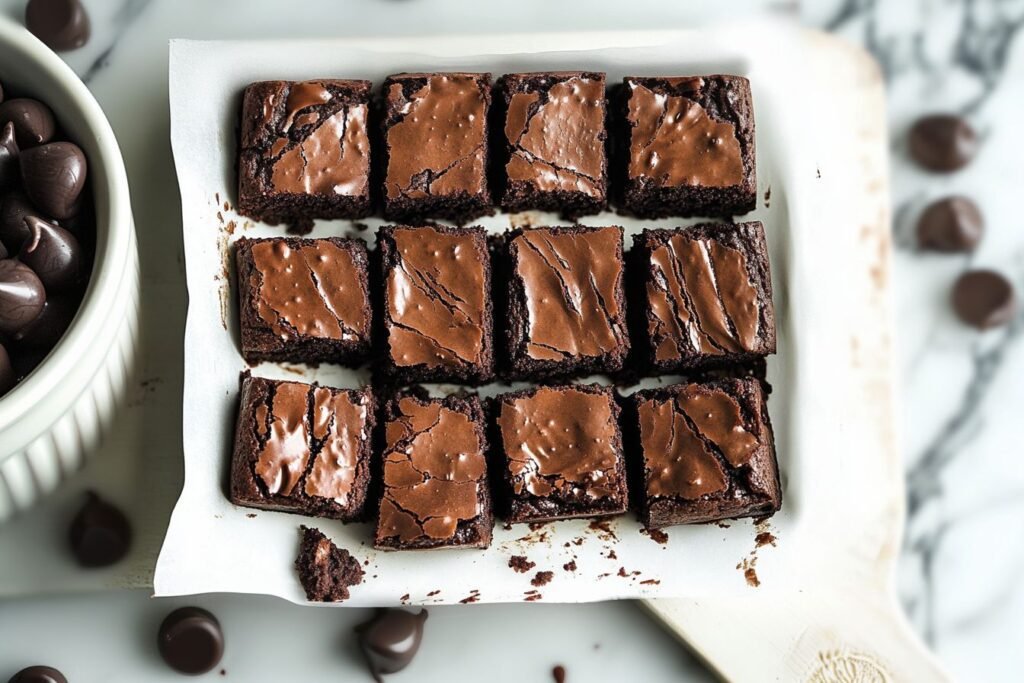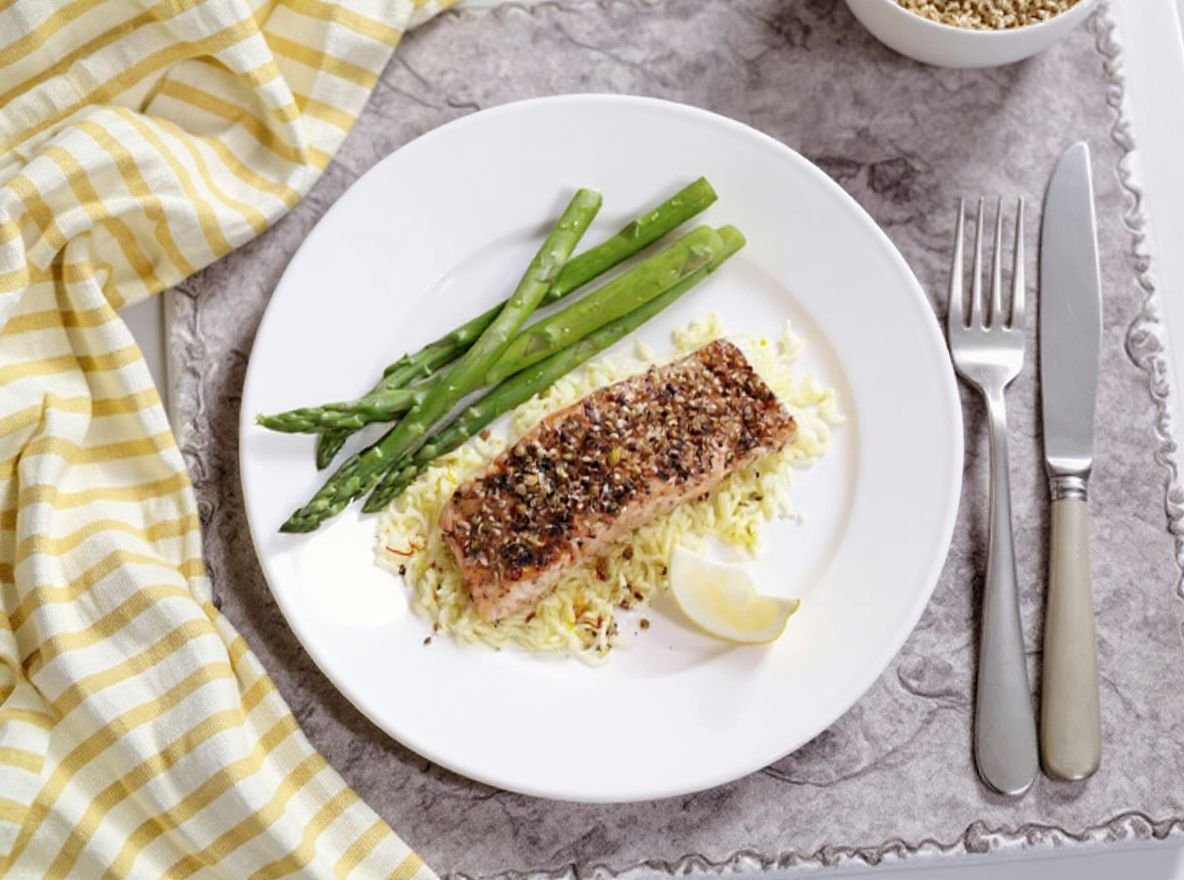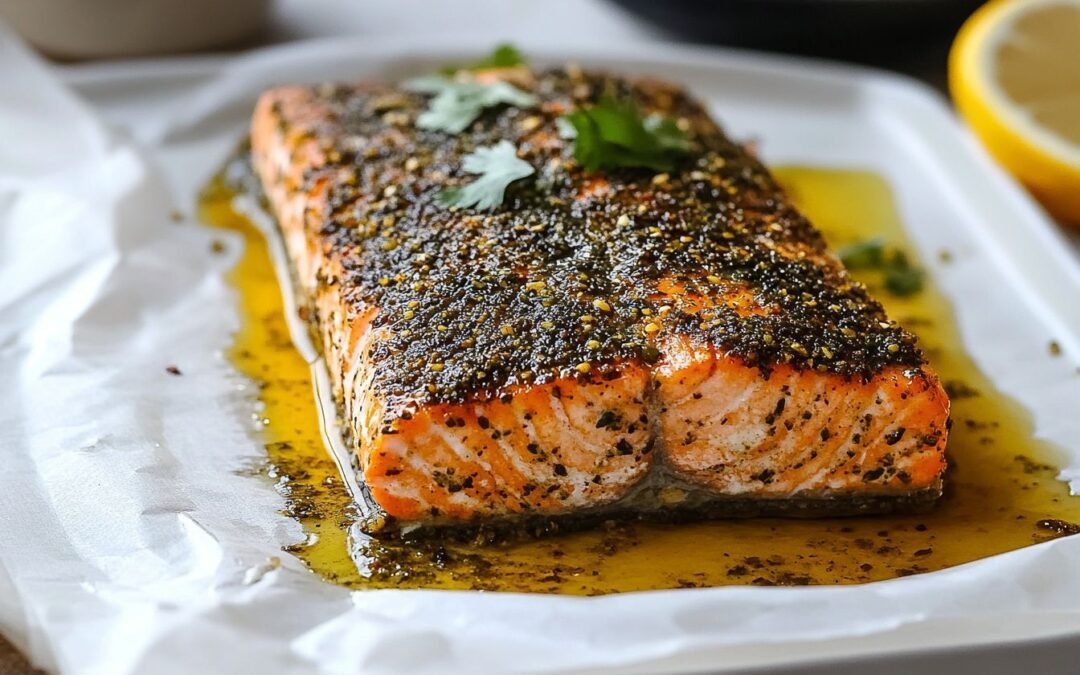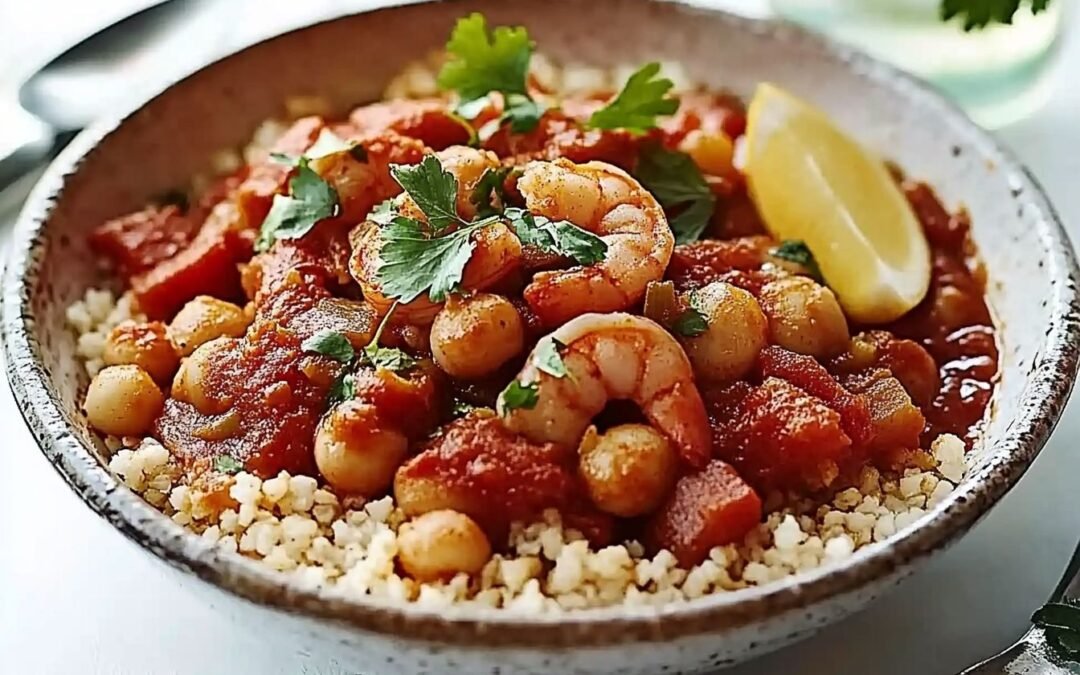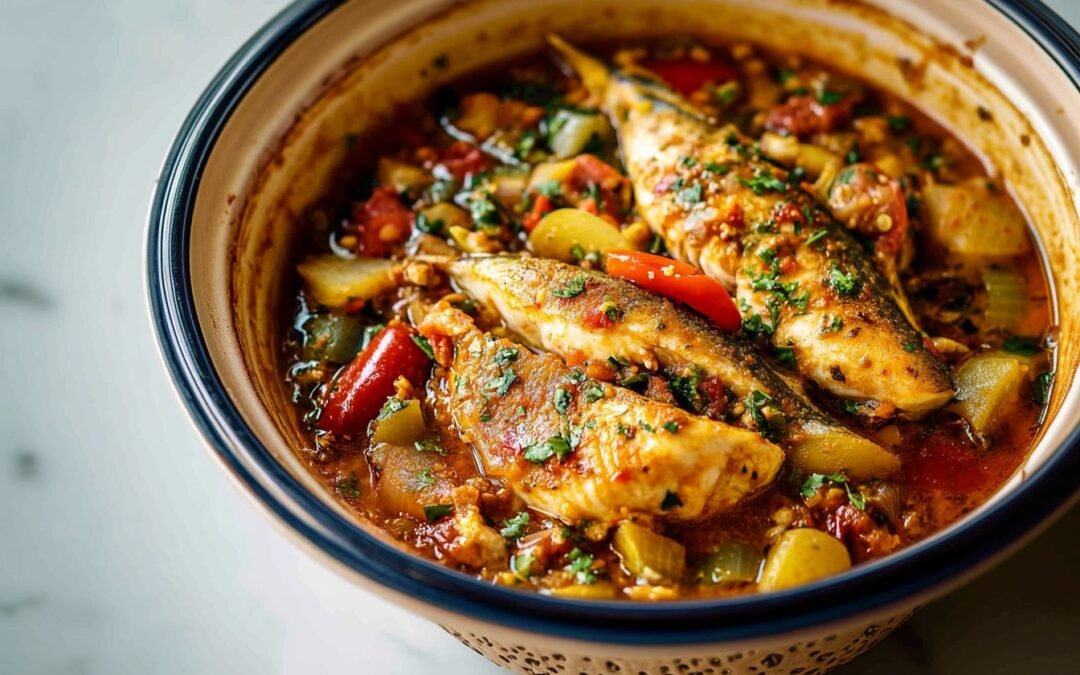If you’re looking for a simple way to elevate salmon for dinner, dukkah crusted salmon is a great choice. This dish combines tender salmon with a crunchy, fragrant pistachio dukkah crust that adds flavor and texture with minimal effort.
To bring it all together, you only need skinless salmon fillets, pistachio dukkah, olive oil spray, and classic sides like saffron rice, steamed asparagus, and lemon wedges. I love how the spices in the dukkah complement the rich fish, making every bite interesting.
I’m excited to share how easy this meal is to prepare. Once you try it, you might find it quickly becoming a favorite for weeknight dinners or casual gatherings.
What Is Dukkah Crusted Salmon?
This is a simple, flavorful dish I love to make when I want something healthy but tasty. It combines salmon fillets with a coating made from dukkah – a Middle Eastern spice mix.
Dukkah usually contains nuts, seeds, and spices like coriander, cumin, and sesame seeds. This blend adds a crunchy, nutty texture and warm, earthy flavors to the salmon.
When I prepare the salmon, I press the dukkah mixture onto the fish before cooking it. The crust forms a tasty, aromatic layer that makes the dish stand out without needing heavy sauces.
I like how this spice mix balances the richness of the fish with the spice mix’s crunch and flavor. It’s easy to make, full of taste, and feels satisfying without being complicated.
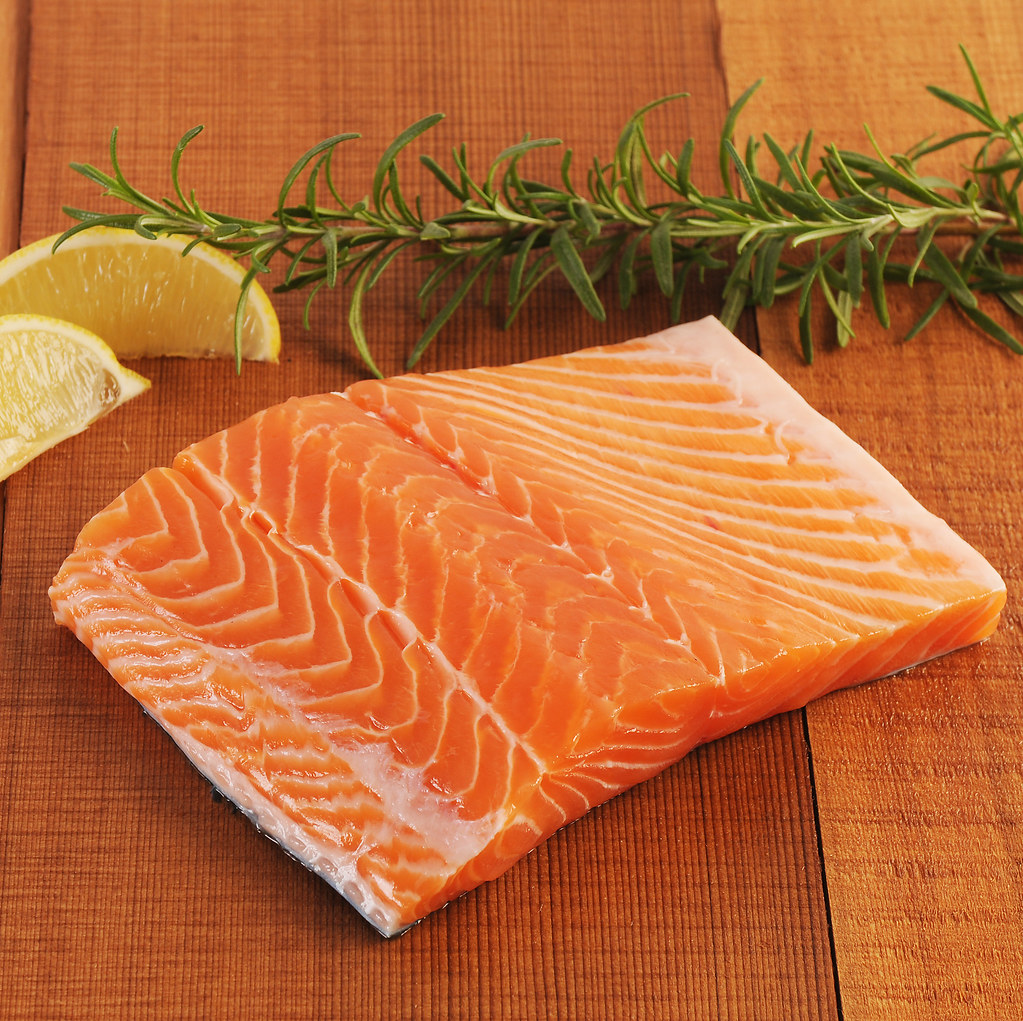
Ingredients
-
4 skinless salmon fillets
-
1/4 cup of pistachio dukkah
-
Olive oil spray
- Steamed asparagus, to serve
-
Saffron rice, to serve
-
Lemon wedges, to serve
How to Make Dukkah Crusted Salmon
- First, sprinkle the salmon fillets with pistachio dukkah. Press it gently so it sticks well to the fish.
- Next, heat a large non-stick pan over medium-high heat. Once hot, spray the pan lightly with oil to keep the salmon from sticking.
- Cook the salmon for about 1 to 2 minutes on each side. This gives me a medium cook, but watch it closely and stop once it reaches how you like it.
- Finally, serve the salmon with the rice and asparagus. A few lemon wedges on the side add a fresh burst of flavor.
Nutritional Information
| Nutrient | Amount per serving |
|---|---|
| Calories | 444 kcal |
| Carbohydrates | 1 g |
| Protein | 42 g |
| Fat | 29 g |
| Cholesterol | 0.1 g |
| Sodium | 121 mg |
| Sugar | 0.4 g |
Serving Suggestions
Side Dishes That Pair Well
Roasted or steamed vegetables work great. I often serve asparagus or green beans lightly tossed in olive oil and lemon juice. Their crispness contrasts nicely with the crust.
A simple couscous or quinoa salad with chopped cucumber, cherry tomatoes, and fresh herbs like mint or parsley adds a refreshing element. You can also try mashed sweet potatoes; their subtle sweetness pairs well with the spices in the dukkah.
For a heartier option, a wild rice pilaf with toasted almonds and cranberries offers nuttiness that echoes the dukkah crust’s flavor profile.
Sauce and Garnish Ideas
I like a cool, creamy sauce to balance the spices. A yogurt-based sauce with lemon zest, garlic, and chopped fresh dill works perfectly. You can also mix in a bit of tahini for a richer texture.
Fresh herbs add brightness. Sprinkle chopped cilantro or parsley over the top just before serving. A wedge of lemon on the side helps brighten the entire dish.
For some extra crunch, roasted pine nuts or extra dukkah sprinkled on top can deepen the texture and flavor.
Tips for Perfect Results
Common Mistakes to Avoid
One big mistake is applying the dukkah too thickly. If you layer it on too heavily, it can fall off during cooking or burn before the salmon is done. I usually press a thin, even layer to keep the crust intact and balanced.
Another trap is not drying the salmon before crusting. Excess moisture prevents the dukkah from sticking well and can make the crust soggy. Patting the fish dry with paper towels fixes that.
Finally, cooking at too high a heat can burn the nuts and seeds in the dukkah. I use moderate heat to give the salmon time to cook through while keeping the crust golden and crunchy.
Best Practices for Crust Texture
I recommend toasting the dukkah lightly before applying it. Toasting enhances the flavors and helps the crust crisp up nicely in the pan or oven.
Press the crust firmly but gently onto the salmon. This helps the dukkah bind without falling off, but also avoids crushing the texture.
Using a bit of oil or butter in the pan gives the crust a golden finish and richer taste. I avoid overcrowding the pan so the heat circulates evenly around the fillets.
Storage and Reheating
I store leftovers in an airtight container to keep them fresh. It lasts well in the fridge for up to 2 days. I find that wrapping it tightly in plastic wrap before placing it in the container helps prevent dryness.
To freeze, I wrap the salmon tightly in foil and then put it in a freezer bag. It stays good for about 1 month. When I plan to reheat, I thaw it overnight in the fridge.
When reheating, I like to keep the crust crisp. I place the salmon on a baking sheet and warm it in a preheated oven at 275°F (135°C) for 10-15 minutes. This method avoids sogginess and maintains the nutty texture of the dukkah.
Alternatively, I use a skillet over medium heat. I warm it gently for 3-4 minutes on each side. This brings back the crunch while keeping the inside moist.
I avoid microwaving because it softens the crust too much and can overcook the fish quickly. If I have to microwave, I do it in short bursts of 20 seconds, checking often.
Conclusion
I love how dukkah crusted salmon brings together bold flavors and a simple cooking process. The crunch from the dukkah adds great texture, while the spices give the fish a unique, aromatic touch.
Making this dish feels satisfying because it’s easy to prepare. You don’t need fancy ingredients, just good quality salmon and a fresh dukkah blend.
If you want to try something new but don’t want to spend hours in the kitchen, this recipe fits the bill perfectly. It works well for a quick weeknight dinner or when you want to impress guests.
I usually serve it with something light, like a simple salad or steamed vegetables. It balances the spice and keeps the meal fresh.
This recipe has become one of my favorites because it’s reliable and delicious every time. Give it a go, and you might find it becomes part of your regular cooking too!
Just one more thing, if you need dessert after this meal, I recommend these tahini brownies.
Get that recipe now (by clicking the image below):
